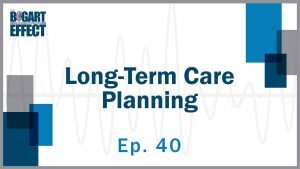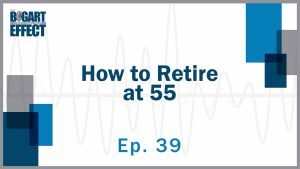As an advanced financial strategist, I am excited to share my insights on Mega Backdoor Roth Strategies with you. These strategies can be a powerful tool for maximizing retirement savings and tax benefits. This blog post will discuss the intricacies of various retirement plan account types and how to maximize tax benefits with Roth conversions and Mega Backdoor Roth Strategies.
We’ll delve into the basics of Roth conversions and discuss the reasons why one might consider converting their traditional IRA accounts to a Roth option. Furthermore, we will provide a comprehensive guide on how the Mega Backdoor Roth Strategy works by utilizing after-tax contributions and in-service withdrawals or conversions.
In addition to these concepts, our discussion will cover in-plan rollovers and after-tax rollovers as essential components of executing successful Mega Backdoor Roth Strategies.
We’ll also present examples demonstrating how these strategies can work with and without company match scenarios. Lastly, we will examine partial-year contribution adjustments along with full-year strategy examples for 2025 onwards.
Retirement Plan Account Types: What You Need to Know
Planning for retirement can be perplexing, yet comprehending the distinctions between traditional 401ks and Roth 401ks is essential.
Traditional 401 (k) and Roth 401 (k)
- Traditional 401k: Contributions are made pre-tax, reducing taxable income, but withdrawals during retirement are taxed as ordinary income.
- Roth 401k: Contributions are made with after-tax dollars, but qualified withdrawals during retirement are tax-free.
Choosing Between a Traditional 401 (k) and Roth 401 (k)
Choosing between traditional and Roth accounts depends on your financial goals and circumstances.
Mega Backdoor Roth Strategy Considerations
When considering a Mega Backdoor Roth strategy, weigh the potential benefits of tax-free growth against the immediate tax savings offered by traditional accounts.
Roth Conversion: The Smart Move for Tax-Free Growth
Upgrade your retirement game by converting your traditional IRA to a Roth IRA for tax-free growth and no RMDs.
How to Convert to a Roth IRA
Transfer funds from your traditional, pre-tax retirement account to a post-tax Roth account. You’re on your way to tax-free growth.
Advantages of Converting to a Roth IRA
- Tax-Free Growth: Your funds grow tax-free until withdrawal during retirement.
- No RMDs: No mandatory withdrawals starting at age 72, unlike traditional IRAs.
- Estate Planning Benefits: Inherited Roths have more favorable distribution rules compared to inherited Traditional IRAs.
- Tax Diversification: Diversify your tax exposure in retirement, providing flexibility when withdrawing funds.
Converting to a Roth IRA can offer significant benefits for certain individuals depending on their financial goals and circumstances. Before taking any action on your retirement accounts, seek counsel from a qualified financial advisor. (source)
The Mega Backdoor Roth Strategy: Maximize Your Retirement Savings
Want to supercharge your retirement savings? The Mega Backdoor Roth strategy can help you do just that by taking advantage of after-tax contributions and in-service withdrawals or conversions.
After-tax Contributions: More Money, More Growth
Start by adding to your company-sponsored retirement plan, such as a classic 401(k), with after-tax payments. While these contributions don’t provide an immediate tax deduction, they can grow tax-deferred within the account until withdrawn or converted into a Roth IRA.
In-service Withdrawals or Conversions: Move Your Money
Next, execute an in-service withdrawal or conversion from your workplace retirement plan into a separate personal investment vehicle like an individual retirement arrangement (IRA). This can be done through an in-service withdrawal or an in-plan rollover, both of which allow assets to be moved into new accounts while maintaining their original tax status. By following these steps diligently each year and planning ahead for market fluctuations, you can secure a comfortable retirement free from excessive taxation. Learn more about the Mega Backdoor Roth strategy from credible sources like NerdWallet and Investopedia.
In-Plan Rollovers & After-Tax Rollovers
Want to execute the mega backdoor Roth strategy? Consider in-plan rollovers or after-tax rollovers.
In-Plan Rollovers
Move funds within your existing workplace savings plan from one account to another without leaving the company’s sponsored program, but check with your plan administrator first.
After-Tax Rollovers
Transfer assets out of your workplace retirement plan into a separate personal investment vehicle like an individual retirement arrangement (IRA) before re-entering them under different pretenses later.
- Pros: Greater control over investments; no need for employer approval or limitations.
- Cons: More complex process; potential tax implications if not executed correctly.
Consult with a financial specialist or tax authority before settling on any choices to guarantee you’re exploiting your retirement funds in the most proficient manner. For more information, check out this guide on Mega Backdoor Roths by Charles Schwab.
Examples of Mega Backdoor Roth Strategies with and without Company Match
Ready to supercharge your retirement savings? Let’s explore how the Mega Backdoor Roth strategy can work for you.
Scenario 1: With Company Match
Score. Your employer offers a 50% match on contributions up to 6% of your salary. You contribute $6,000 to your traditional 401(k), while your employer adds $3,000. To maximize the Mega Backdoor Roth strategy:
- Make after-tax contributions up to the annual limit ($66,000 for 2025) minus pre-tax contributions ($9k).
- Convert the remaining $57k in after-tax contributions into a Roth IRA through an in-service withdrawal or conversion.
Scenario 2: Without a Company Match
No company matches? No problem.
- Under IRS guidelines, contribute up to the maximum allowed amount ($23,500 for 2025).
- Put the remaining $41,000 in after-tax dollars into your 401(k).
- Later, convert that balance into a Roth IRA using the Mega Backdoor Roth strategy.
For those with the right financial resources, utilizing the Mega Backdoor Roth strategy can greatly maximize retirement savings. Happy investing.
Partial Year Mega Backdoor Roth Strategy Example
Starting the mega backdoor Roth strategy mid-year? Understanding the implications of mid-year contributions and how they affect your saving objectives is key.
Adjusting for Partial-Year Contributions
Adjust your contribution amounts if you begin contributing to your after-tax 401(k) halfway through the year. If you’ve already contributed the maximum pre-tax and Roth deferrals for the year, you can still maximize your after-tax contributions by calculating how much room is left based on current income levels and employer matching programs.
Maximizing After-Tax Contributions
- Determine remaining limits: Calculate how much room is left for pre/post-tax deductions based on current income levels and any applicable employer matching programs.
- Create a plan: Develop a customized financial planning, investment management, or tax preparation strategy that takes into account all relevant factors.
- Maintain flexibility: Stay open-minded about adjusting future contributions depending upon changes occurring throughout market conditions and be proactive when opportunities arise, allowing individuals greater control of their financial futures.
Maximizing Your Full-Year Mega Backdoor Roth Strategy Example (2025 & Beyond)
Planning ahead is crucial for executing a full-year mega backdoor Roth strategy, so you can control your financial future and minimize risks from market volatility.
Max Out Pre-Tax Contributions
Contribute at least $19,500 to your traditional or Roth 401(k) to take advantage of the maximum pre-tax contribution limit for the current year.
Take Advantage of Employer Match
Ensure you’re contributing enough to receive the full match benefit if your employer offers a matching program in your retirement plan account.
Utilize Mega Backdoor Roth Contributions
Make after-tax contributions up to the overall combined limit for the year to convert these funds into a Roth IRA later.
Execute In-Service Withdrawals or Conversions
Execute in-service withdrawals or conversions, if allowed by your plan, to move the funds into a Roth IRA for tax-free growth on your investments. For instance, someone making $350k annually could potentially maximize all aspects involved by using these techniques. By following these steps and monitoring your progress throughout the year, you’ll be well on your way to maximizing the benefits of a full-year Mega Backdoor Roth strategy.
Contact Bogart Wealth Today!
Maximize your retirement savings and minimize your tax burden with Mega Backdoor Roth Strategies – a powerful tool for savvy consumers. By taking advantage of after-tax contributions and in-service withdrawals or conversions, you could potentially contribute tens of thousands of dollars more each year to your Roth IRA than with traditional contribution limits. Not sure if this strategy is right for you? Consult with a professional who specializes in customized financial planning, investment management, or tax preparation services. Don’t miss out on the benefits of Mega Backdoor Roth Strategies – start exploring your options today!
FAQs About Mega Backdoor Roth Strategies
What are Mega Backdoor Roth Strategies, and how can they benefit my retirement savings?
Mega Backdoor Roth Strategies involve utilizing after-tax contributions and in-service withdrawals or conversions to maximize retirement savings and tax benefits. They can provide tax-free growth and offer greater control over investments, allowing you to secure a comfortable retirement with reduced taxation.
How do Roth conversions work, and what advantages do they offer?
Roth conversions involve transferring funds from a traditional, pre-tax retirement account to a post-tax Roth account. The advantages of converting to a Roth IRA include tax-free growth, no mandatory withdrawals (RMDs) starting at age 72, estate planning benefits, and tax diversification.
When should I consider choosing between a traditional 401k and a Roth 401k?
The choice between traditional and Roth accounts depends on your financial goals and circumstances. Consider the potential benefits of tax-free growth with a Roth account versus the immediate tax savings with a traditional account.
How can I execute the Mega Backdoor Roth Strategy using in-plan rollovers or after-tax rollovers?
In-plan rollovers involve moving funds within your existing workplace savings plan from one account to another without leaving the company’s sponsored program. After-tax rollovers transfer assets from your workplace retirement plan into a separate personal investment vehicle like an IRA.
What are the steps for maximizing the Mega Backdoor Roth Strategy with and without a company match?
With a company match, you can make after-tax contributions up to the annual limit and convert the remaining amount into a Roth IRA. Without a company match, contribute up to the maximum allowed amount and then add the remaining funds in after-tax dollars to your 401(k) before converting them into a Roth IRA.
How can I implement a Mega Backdoor Roth Strategy mid-year and adjust for partial-year contributions?
To implement the strategy mid-year, calculate how much room is left for pre/post-tax deductions based on current income levels and employer matching programs. Adjust your contributions accordingly to maximize after-tax contributions.
What steps should I take for a full-year Mega Backdoor Roth Strategy in 2025 and beyond?
Start by maxing out pre-tax contributions to your traditional or Roth 401(k). Ensure you receive the full match benefit if offered by your employer. Make after-tax contributions up to the overall combined limit and execute in-service withdrawals or conversions to move the funds into a Roth IRA for tax-free growth.



